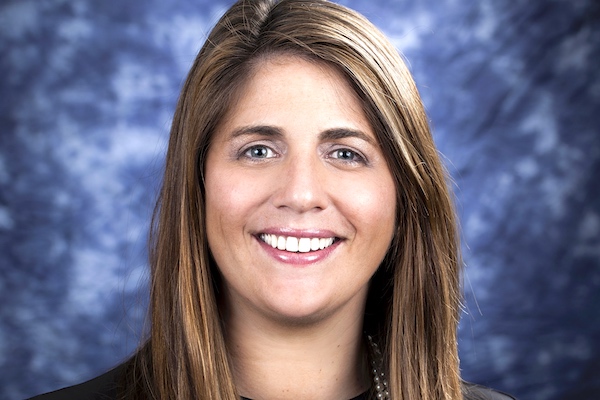Grassroots success requires constant effort; more groups raising profile on advocacy team
Grassroots success requires constant effort; more groups raising profile on advocacy team
- November 8, 2019 |
-
 WILLIAM EHART
WILLIAM EHART

Some say best practice is to have grassroots and lobbying teams separate but equal, meaning greater responsibility for those in field

Erica Farage, IFA
It's easy to make a lawn look green with a dash of fertilizer, but are you tending the roots year round?
Associations are increasingly recognizing the value of a robust and ongoing grassroots program—and rewarding successful practitioners with higher job titles and more input into overall advocacy strategy. That's a shift from the previous (and still common) practice of having grassroots managers play second fiddle to the traditional "shoe-leather" lobbyists.
Partly this reflects a new reality: Lobbying based on relationships with elected officials is not enough to achieve association goals in the current political environment.
"Washington clearly is changing," said Nick DeSarno, director of digital and policy communications at the Public Affairs Council, which does research and education on advocacy topics. "It takes a campaign-style push to get big legislation done, especially at the federal level. But now that's even happening in the states."
DeSarno, a former grassroots manager at the American Dental Association, said a best practice is to have lobbying and grassroots advocacy as separate departments reporting to the same boss.
That's the way things are done at the Alzheimer's Association, LeadingAge and International Franchise Association.
Protecting the franchises
When Robert Cresanti became IFA CEO in 2015, he put the federal and state lobbying departments under Senior Vice President of Public Affairs Matt Haller, who also oversees the grassroots unit. (Grassroots previously reported to Cresanti when he was IFA's top lobbyist.)
"A lot of associations are moving toward a much more integrated approach," Haller said. "We try to run all of our issues like a campaign where we figure out what elements we need to be successful. (Vice President of Political Affairs and Grassroots Advocacy) Erica Farage is at the table for every one of our decisions."
"There's a higher expectation among our member companies that we deliver more, and that obviously helps with the overall value proposition of the organization," he said.

Joe Franco, LeadingAge
A strategy, not a tool
Joe Franco of LeadingAge, an association of senior housing and care providers, has grassroots experience going back to a time when the job was considered clerical. He is now vice president of grassroots, and reports to Senior Vice President of Policy and Advocacy Ruth Katz.
"Some organizations have the grassroots team underneath the congressional affairs team," Franco said. "And sometimes what happens is that grassroots then becomes a tool instead of a strategy, it only gets used when the lobbyist feels like it's necessary.
"When they're two completely distinct teams within an organization, the grassroots team can really think about developing the member stories and think about ways to engage when there isn't a campaign going on.
"Grassroots is not a faucet, you don't turn it on and turn it off when you need action, you need to constantly be working with your advocates, you need to constantly be flexing your grassroots muscle. That way, when you do need to do a heavy lift, your muscles are ready to go," Franco said.

John Funderburk, Alzheimer's Association
Encouraging more engagement
At the Alzheimer's Association, Vice President of Advocacy John Funderburk is on equal footing with the federal and state affairs leaders and they all report to Chief Policy Officer Robert Egge.
"We're always building those grassroots, we're always bringing new people in," Funderburk said. "We like to do what I call a ladder of engagement. You might have a grassroots activist who signs a petition or writes a letter, but then they raise their hand and they want to do a little bit more. In a structure where grassroots is underneath lobbyists, that may not be as effective."
Funderburk said the advocacy departments should meet "at least weekly."
"It's all about coordination and making sure that the lobbyists and the grassroots folks are talking on a regular basis," Funderburk said. (Our lobbyists) "might have the latest and greatest, having talked to a legislative aide recently, some new information that can really help a grassroots volunteer out in the field."
Career path
As the grassroots function is elevated, so are the responsibilities—and job titles—of those in charge.
"I'm seeing many more folks with the title of vice president of advocacy or chief advocacy officer," said Amy Showalter, a PAC and grassroots consultant. "It was just a managers- and directors-level role when I did that in the '90s."
In fact, Showalter said, one lobbyist told her back then he was surprised to see men applying for the role—he thought it was "something that just women did," she said.
Now, Farage at IFA says she can do it all, and has Haller's support. She said—as did Franco at LeadingAge—that she can see a path for herself to one day head all of public affairs.
"Everything is so integrated at this point," she said. "While it's not my day-to-day job, I could certainly go up to Capitol Hill or a state capital and explain things just as effectively as our lobbyists can, because we're continuously out there working on our messaging, what we're saying and how we're saying it."
Haller said grassroots executives can set their sights just as high as their lobbying counterparts: "Not to diminish the importance of (lobbying) jobs, but it's about managing people and managing budgets and managing relationships."
"A grassroots professional could be a heck of an association CEO, too, because they're so in touch with the membership," Haller said.
"It's just another way that associations and advocacy are changing, and for the better, because there's a broader range of people that can rise through the ranks and make a career out of being at an association."
